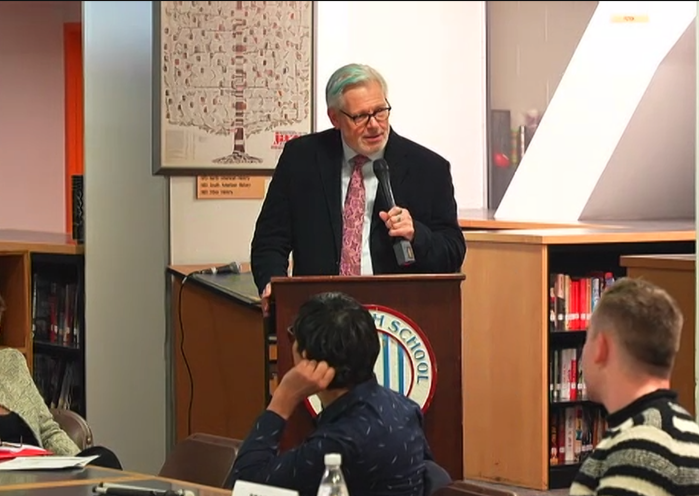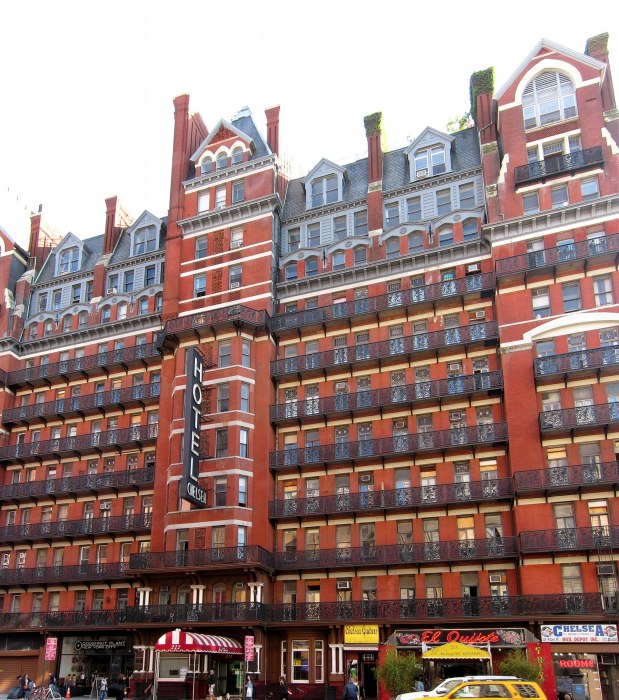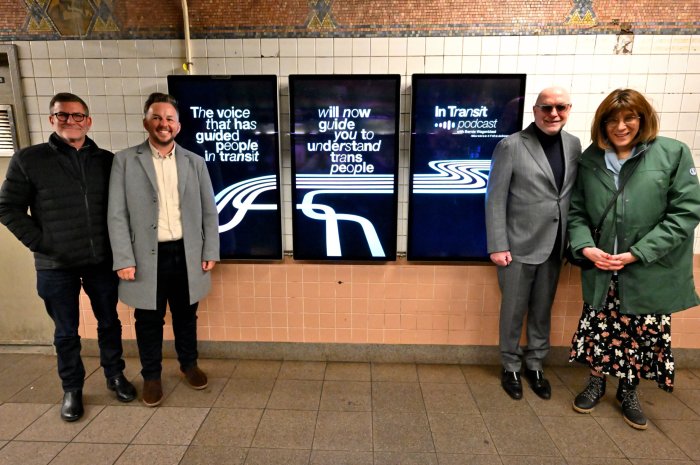The disastrous collision of a sightseeing helicopter and a private plane off of the Chelsea waterfront over the Hudson River on Sat., Aug. 8, prompted elected officials to demand regulation of the air corridor above the river and Hudson River Park advocates to insist on an end to tourist helicopter flights.
The accident, in which nine people perished, occurred at an altitude of 1,100 feet, which is 1 foot below the ceiling at which air space is controlled by the Federal Aviation Administration and, thus, an area where safety depends on pilots’ vigilance.
The helicopter originated from the W. 30th St. heliport. Located on Hudson River Park property, the heliport has long been the target of neighbors and park advocates because of noise and engine fumes. Moreover, the 30th St. heliport is the subject of a 2008 court-approved agreement that reduced the number of flights from the location and will end all tourist helicopter flights from 30th St. by April 1, 2010.
At a news conference at the heliport in Hudson River Park on Monday, Congressmember Jerrold Nadler, along with Borough President Scott Stringer and Councilmember Gale Brewer, demanded that the Federal Aviation Administration regulate New York City’s crowded and dangerous air space.
“It’s unconscionable that the F.A.A. permits unregulated flight in a crowded airspace in a major metropolitan area,” Nadler said. “And it is ridiculous that private planes and helicopters flying through a crowded area are dependent on visually sighting other aircraft and communicating with them.”
Nadler demanded that the F.A.A. require all private planes to have a Traffic Collision Avoidance System (TCAS), which alerts them when another aircraft is getting too close.
“We demand that all general [private] aviation aircraft also be required to carry a Mode C transponder, a device that sends out a constant signal announcing a craft’s location,” Nadler said.
“Every helicopter and general aviation aircraft should also be required to file flight plans, even for trips below 1,100 feet,” Nadler said. “In fact, we should give serious consideration to banning all flights below 1,100 feet until we can install radar systems that can track them.”
At the same time on Monday, West Side park advocates called for an immediate halt to tourist flights from 30th St. and regulation of private aircraft flights.
“It was a tragic circumstance, and I think someone should come up with a plan that is more intelligent than what’s presently been happening — which is basically no plan at all,” said Robert Trentlyon, founder of the Chelsea Waterside Park Association and a plaintiff in the lawsuit that led to the settlement. “I think there’s too much leeway given to people who can afford to fly private planes, and most of those flights are unnecessary,” Trentlyon said.
“The Hudson River should be closed to nonemergency helicopters,” added John Dellaportas, chairperson of the West St. Coalition, a Battery Park City advocacy group. “Tourists can ride the Circle Line and businessmen can hop a chopper on the East River or Wall St.”
Lawsuit against heliport
Dellaportas is a plaintiff in the lawsuit that was filed against the heliport at the end of 2007 by Friends of Hudson River Park, a parks advocacy group.
The suit named Air Pegasus, operator of the 30th St. heliport for 30 years, and Liberty Helicopters, which runs sightseeing and commercial chopper flights out of the heliport. The suit was based on the 1998 Hudson River Park Act, which prohibits tourist flights entirely and permits commercial helicopter operations only west of the Hudson River bulkhead line.
The 30th St. heliport is on the east side of the bulkhead — or to the land side of the Hudson River seawall. Under the park legislation, the deadline for ending the 30th St. heliport’s operation was 2001, and the suit contended the heliport already had been illegal for six years.
The suit also named the Hudson River Park Trust, the state-city agency building the 5-mile-long riverfront park, because it had not evicted the illegal heliport from park property.
The settlement, however, assumed that the city would find a legal location for commercial and emergency helicopter operation on a pier on the west side — the river side — of the park bulkhead. The settlement says that commercial, government and emergency helicopter flights would continue at 30th St. until the end of 2014 or until a new heliport is in operation on a nearby pier and no longer on the so-called upland portion of the park.
The settlement called for reducing the number of sightseeing flights from 25,000 between June 2008 and May 31 of this year, to 12,500 between June of this year and March 31, 2010. It also set flight patterns requiring sightseeing helicopters, as much as possible, to depart to the west over the middle of the river and then fly north or south. The required arrival is from the north or south over the middle of the river and then turning left or right to the heliport.
A.J. Pietrantone, executive director of the Friends of Hudson River Park, said on Monday that the heliport has indeed reduced the number of flights in compliance with the agreement and has mostly complied with the flight patterns.
“We don’t feel that there has been flagrant violations of the flight patterns,” he said.
The agreement also required the heliport to erect improved barriers to muffle noise and buffer rotor wind from the park.
“We did have to take [the heliport] back to court last year to get them to install the barriers,” Pietrantone said.
Trust ‘saddened’ by tragedy
Noreen Doyle, vice president of the Hudson River Park Trust, said on Tuesday that the Trust was deeply saddened by the tragedy.
“The Trust remains committed to fully complying with all aspects of the June 2008 court-ordered settlement…[including] the complete relocation of the heliport by December 2012,” Doyle said.
City Council Speaker Christine Quinn said on Monday that the F.A.A. has for too long taken a wait-and-see approach to low-altitude flights over the Hudson River. Quinn called for an emergency oversight meeting of the Council’s Transportation Committee later this month.
Mike likes copters
The settlement notwithstanding, Mayor Mike Bloomberg has long been on record as saying a heliport on the West Side is vital for corporate business. At a news conference on Saturday, he responded to a question about halting sightseeing helicopter flights by citing the importance of tourism.
Dellaportas on Monday had a very different take on helicopters.
“We view helicopter tours as a needless safety hazard, a noise and air polluter and an all-around menace,” he said. “We believe this great city is as much a draw without these mechanized mosquitoes as with them.”
Liberty Helicopters issued a statement of deepest sympathy for the families of the passengers and flight crew of both aircraft in Saturday’s accident and pledged cooperation with the investigation of the National Transportation Safety Board. Liberty said Jeremy M. Clarke, 32, the helicopter pilot, who had been flying with the company for a year and a half, was an instrument-rated commercial pilot with more than 3,100 total hours flying helicopters and 850 hours flying Eurocopters, the helicopter involved in the accident.
At a press conference in Hoboken, N.J., on Sunday, Debbie Hersman, the National Transportation Safety Board’s chairperson, giving an update on the first 24 hours of the accident’s investigation, provided more details into the grim incident.
Hersman said the helicopter pilot had 1,800 hours of flight time before he was hired by Liberty in February 2008, after which he logged an additional 900 hours in the air.
The plane was a six-seater Piper “Lance,” she said. Piloted by Steven Altman, 60, of Pennsylvania, it was flying from Teterboro, N.J., to Ocean City on the Jersey Shore, with Altman’s brother and nephew as passengers.
Plane didn’t respond
Hersman said that slightly more than a minute before the collision, the Teterboro airport did an “electronic hand-off” of the plane to Newark Airport. However, Newark Airport had not been contacted by the accident aircraft, she said. Teterboro attempted to reach the plane, but there was “no contact with the target,” Hersman said.
The N.T.S.B. chairperson said Liberty Helicopters has had “eight accidents and one incident” in the last several years, Saturday’s midair collision being the first fatal accident. On July 7, 2007, a Liberty chopper experienced an “auto-rotation into the Hudson River,” which is still under investigation, she said. The tour company had two accidents and one incident last year, she noted.
She said that in Saturday’s collision, the copter — which quickly sunk in water 30 feet deep — had been equipped with emergency floats, but that they must be deployed manually.
Because of the small size of both the plane and helicopter, neither was required to have a flight recorder or voice recorder, Hersman said. However, she noted, N.T.S.B., in the past, has recommended that small aircraft be equipped with such devices, and that there are low-cost, light-weight recorders available.
Tours target tourists
Although the helicopter flights had been popular with tourists before Saturday’s fatal collision, in which five Italian tourists died, some foreign visitors had trepidation about going aloft, even before the crash. In the case of Lorenzo Bossola, 13, and his mother, Paola Casali, 42, from Rome, Lorenzo’s misgivings were what saved their lives.
The two had bought tickets for an 11- to 15-minute “Big Apple Tour” on one of the choppers. But Lorenzo was scared about going up on the copter, which led to their being late and missing the fatal flight.
“I think somebody put a hand in our…because he [Lorenzo] didn’t want to come,” said a shaken Casali afterward, as she sat with her son on a low stone wall along the Hudson River Park bikeway by the heliport.
Although she had previously taken a tourist helicopter flight in New York City, Casali now asserted, “I think we can enjoy other things. We can walk. We can visit Guggenheim. We can visit MoMA. It’s not important to take helicopter.”
A group of Spanish tourists arriving at the heliport around 5 p.m., five hours after the fatal accident, were shocked to hear the news. They had paid 98 euros apiece — around $125 — for their tickets. At least two of them had been reluctant to go aloft.
“My sister, she didn’t want to fly,” said Juan-Antonio Belda, 38, of Alicante, Spain. “My sister said, in a few hours, it could be us.”
Asked how she felt, his sister, Sylvia Belda, 31, patted her arm and shivered to indicate goosebumps, then held out a shaking hand.
As for Juan-Antonio, he was fatalistic.
“These things, it’s like a lottery,” he said.
Similarly, their friend Alejandro Falco, 33, said he wouldn’t be deterred from taking a tourist helicopter flight in the future, feeling the odds are against being in a crash.
“It’s probability,” he said.
Day is shattered
The horrifying accident on a beautiful summer day was witnessed by thousands along the Lower West Side waterfront, from parkgoers out enjoying the High Line and Hudson River Park to residents gazing out from apartment windows, balconies and rooftops.
Jasmine Pan, 28, was taking her Golfing 101 class at Chelsea Piers on Saturday morning around noon when she couldn’t believe her eyes.
“The only thing I saw was a black helicopter going down,” she said. “I called 911; it said to leave a message. I was a little bit scared. At least three of us, we saw it.”
— with reporting by Patrick Hedlund and Jefferson Siegel

































